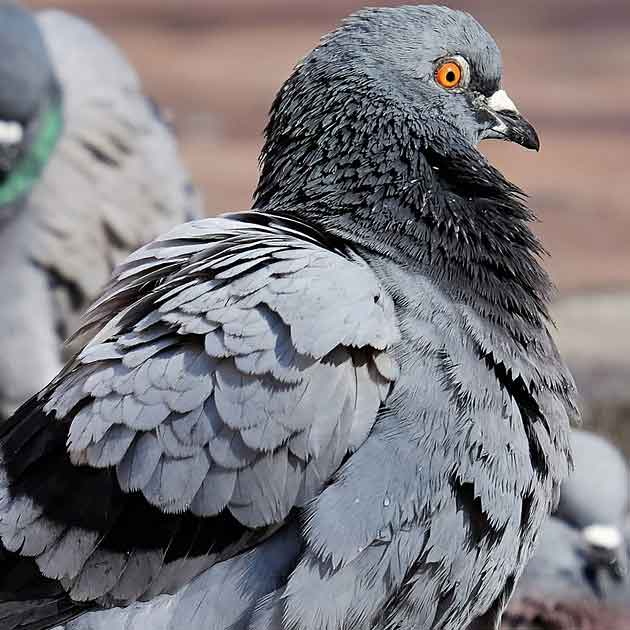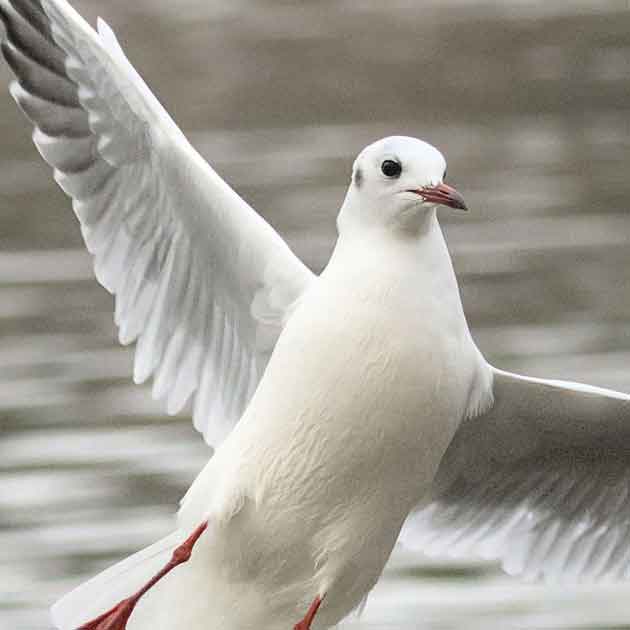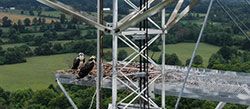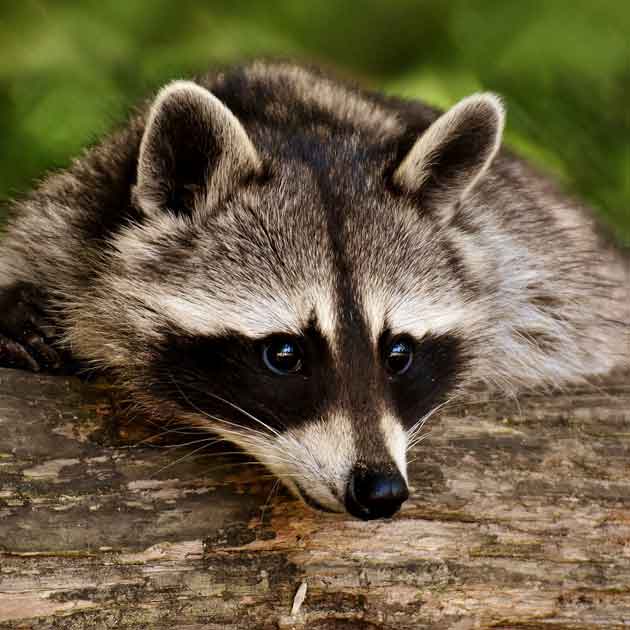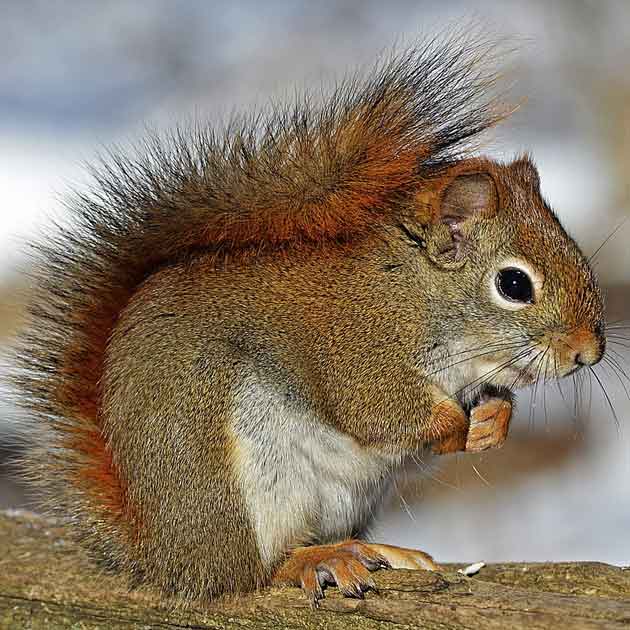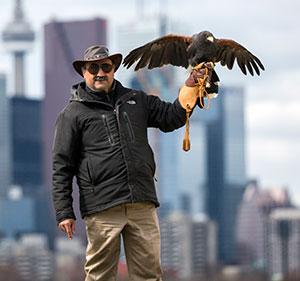Plummeting temperatures and the onset of winter have pest birds such as pigeons, starlings, and sparrows looking for warmth and shelter in commercial buildings including warehouses, box stores, and large manufacturing and storage facilities. Depending on the use of the facility, this can lead to catastrophic product and financial loss as well as health and legal consequences.

In this article, we'll explore how to eliminate pest birds who congregate and roost in large commercial facilities and mitigate the risk to your product, profit, health and reputation.
What Type of Bird is Found in Commercial Production and Storage Facilities?
Here, in the GTA and in fact all across southern Ontario, we typically find sparrows, pigeons and starlings in facilities that produce and/or store food, medical products, and box stores. Depending on the type of facility, the commercial bird control approach to getting these birds out may differ.
What Kind of Facilities Do Pest Birds Target?
Pest birds can be found any time of the year in any space they're allowed to linger. Of course, if this happens to be a facility where food is produced or stored, it's even more popular. As winter approaches, birds seek to get out of harsh winds and freezing temperatures - no surprise there. Large warehouses or manufacturing facilities, box store, or airline hangars offer a somewhat controlled climate, rafters perfect for roosting, and thanks to frequently open loading docks, the option to come and go as one pleases. If one was a bird :)
Why Are Birds in Storage Facilities Dangerous?
Birds are pretty to look at and listen to, but they are anything but clean and can cause havoc in commercial settings in no time at all. Bird feces and feathers are entirely unsanitary.
- Health Hazard from Bird Feces
Bird feces accumulate quickly and contaminate both product and packaging. It's even worse when feces is allowed to dry and is then disturbed (i.e., by sweeping up). Pathogens become airborne and pose a serious health risk to workers. - Health Hazard from Bird Feathers
Feathers also carry a host of diseases and parasites which are easily transferred to anything they come in contact with. - Corrosion From Bird Feces
Bird feces are highly acidic and corrosive; they can permanently damage steel beams and threaten the structural integrity of your building. - Regulatory and Legal Issues
The presence of pest birds is an automatic fail during any health inspection. You may incur reprimands, license suspension, and fines. - Loss of Income and Productivity
Having failed mandatory inspections, you may end up having to dispose of entire pallets of products and/or halt production until the birds have been eliminated and the entire facility has been cleaned and disinfected.
Once you've discovered birds in your facility, it's time to call in a commercial bird control and removal service. These services are highly specialized and require extensive training and expertise, ranging from industry-appropriate removal methods, to proper bird deterrent installation techniques (such as bird netting) and biohazard training. In the GTA, the company to call for commercial bird control is Hawkeye Bird & Animal Control.
What Are the Steps to Get Birds out of Warehouses and Factories?
When it comes to commercial bird control, things really need to be done in sequence. There's no point in evicting birds if the way in hasn't been secured. So, let's look at the process:
The Inspection
A thorough walk-through inspection is needed where ALL entry points are identified as well as the area(s) where birds are roosting and where they might need to be, if they are to be captured.
Devise a Strategy
Decide whether birds will be captured and removed, killed and removed, or sent out of the building under their own steam. Here, it depends on the type of facility and product that is to be protected, and whether or not access to the building can be cut off completely.
Acquisition of Appropriate Bird Control Permits
Depending on the removal strategy and method, federal bird permits are likely required. This could be related to the bird species and/or the actual method or deterrent to be used.
Sealing of ALL Access Points
While this may sound like an unsurmountable task, there are products specifically developed to seal off loading bays, attach to trailers, and close ground-level gaps. It is crucial to leave no gaps or holes, itty-bitty as they may be, where birds could find their way back inside. Of course, there are areas where this is just not an option - aircraft hangars, for example. Here, we'll want to do the opposite, open everything up, and let birds of prey take over.
The Task of Removing the Birds
Alright, let's pull up our sleeves. There are many options when it comes to getting pest birds out of your warehouse or manufacturing facility. Some yield great success and qualify as humane and ethical. Some do not.
Humane and successful methods for commercial bird removal:
- Capture Netting™ - Vertical netting that traps birds. Birds are collected and transferred by hand;
- Box traps for sparrows - Basically a small live trap with a very sensitive trigger. Birds are collected and transferred by hand ;
- Laser traps - When a bird sets off the trigger by flying through the laser beam, a net is released and traps the bird. Birds are collected and transferred by hand;
- Auditory devices - male/female calls are used to send birds to one end of the building. This is used in conjunction with methods to actually capture the birds;
- Shooting - In some situations birds may be shot. This is absolutely not to be used near food production or storage, any laboratory setting, etc. Birds are collected and removed by hand.
Inhumane and strongly discouraged methods:
- Glue boards - similar to those used to trap rodents. They condemn the trapped animal or bird to a horrific and prolonged death;
- Poison - although some poisons are legal, they often kill more species than was intended. Secondary poisoning of animals or birds of prey who consume prey that has been poisoned is of big concern.
 Falconry - Birds of Prey
Falconry - Birds of Prey
In large areas that cannot be sealed, birds of prey are flown to 'encourage' pest birds to vacate the area. This requires an obvious opening and escape route for the pest birds to get out. Hawkeye uses kestrel falcons, sharp shinned hawks, coopers hawks, and harris hawks in these type of commercial buildings.
The Cleanup after a Commercial Building Bird Infestation
Cleanup depends largely on client and/or industry protocols. The more sensitive (think medical laboratory or food production) the product or location is, the more strict the clean-up protocol will be. Professional commercial bird control companies such as Hawkeye Bird & Animal Control are trained and certified to undertake such tasks.
Birds in Your Warehouse? Call Hawkeye Bird & Animal Control!
Protect your product, staff, and profits and do not allow pest birds to move into your commercial facility for the winter. Call Hawkeye today and schedule your thorough inspection followed by a detailed custom plan to get rid of the birds in your warehouse or manufacturing/storage facility in accordance with your industry regulations.
We are located in the Greater Toronto Area but we travel worldwide. Call today!


